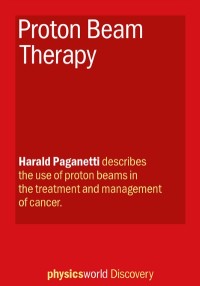Tag archives: books
Physics World’s shortlist for Book of the Year 2017
By Tushna Commissariat
The first week of December can only mean one thing – it’s time to reveal the shortlist for the Physics World book of the year. We’ve based our choice on the 54 books we’ve reviewed over the last 12 months in Physics World, picking our favourite 10 using the same three criteria that have been in place since we launched our book of the year award in 2009. These are that the books must be well written, novel and scientifically interesting to physicists.
Following on from a tumultuous 2016, this year has seen much political strife and human-rights crises, along with the rise of the unexpected demon of “fake news”. Unsurprisingly, the books we reviewed in Physics World this year reflected a lot of these global issues, which means that, along with the usual mix of popular-physics titles, the 2017 shortlist has a few books that at first sight might not seem to have direct links to physics. However, we feel these titles are nevertheless important and relevant to physicists (and of course scientists in general).
Given the number of strong and interesting books on our shortlist, it’s going to be hard to pick a single winner. That, however, is what we shall endeavour to do, via the Physics World podcast next week, when we’ll announce the award-winning book and discuss some of our other favourites on the shortlist. Let us know which ones you have read and are your favourite, and which you may be adding to your Christmas list.
View all posts by this author | View this author's profile
Quantitative finance: what’s it really all about?
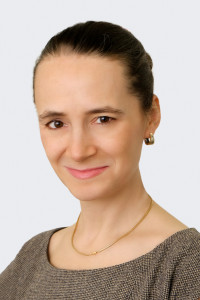
Mixing physics and finance – Jessica James is the author of the new Physics World Discovery ebook Quantitative Finance.
By Matin Durrani
Among the many joys of studying physics is that a degree in the subject can take you down lots of different paths. As our recent Physics World Careers 2017 guide revealed, they range from research and industry to education, IT and even sports, politics and the arts.
One particularly popular destination is the world of finance, which is hardly surprising given physicists’ love of numbers. Those in finance work in many different areas, with one of the most high profile – and lucrative – being the field of “quantitative finance”.
But what exactly does the term mean and what’s the field all about? To find out more, do check out the new, free-to-read Physics World Discovery ebook entitled Quantitative Finance, written by Jessica James – a managing director and senior quantitative researcher at Commerzbank in London.
As James explains in the introduction to her book, the field includes “complex models and calculations that value financial contracts, particularly those which reference events in the future, and applies probabilities to these events”. I encourage you to read her book, which is available in PDF, ePub and Kindle formats. And to whet your appetite, James has kindly answered some questions about what she does, her career to date and what the book’s about.
View all posts by this author | View this author's profile
Proton therapy: the benefits and the challenges
Proton therapy is an increasingly popular treatment technique that uses beams of protons to accurately target and destroy cancerous tumours. A new Physics World Discovery ebook, Proton Beam Therapy, takes a close look at the physics of this cancer treatment, its benefits and the challenges associated with bringing this approach into the clinical mainstream.
The ebook is written by Harald Paganetti, director of physics research at Massachusetts General Hospital and professor of radiation oncology at Harvard Medical School. He is a pioneer in advanced Monte Carlo dose calculations for proton therapy, and is considered the world expert on the relative biological effectiveness of proton beams.
In the last few decades, proton therapy has transitioned from research laboratories into the clinical setting – making this publication particularly timely. There are currently around 60 proton therapy facilities worldwide, and this number is increasing rapidly. “Proton therapy is becoming a standard treatment option but there are still many challenges in terms of the physics, biology and clinical use of protons, which are summarized in this ebook,” Paganetti explains.
View all posts by this author | View this author's profile
Introducing Physics World Discovery
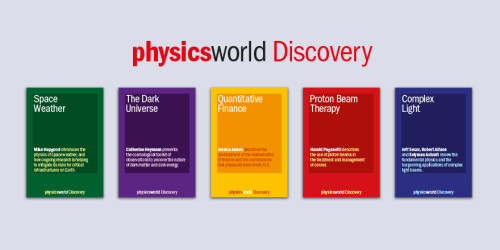
Free to read – the first five Physics World Discovery titles.
By Matin Durrani
What better way to celebrate World Book Day than by checking out Physics World‘s new series of free-to-read, short-form ebooks. Entitled Physics World Discovery, they are short introductions to some of the hottest topics in physics written by leading voices in the physics community.
Available online here, these short-form ebooks follow all the attributes of feature articles in Physics World magazine – being well written, accessible, timely and authoritative. But as ebooks, they allow authors to go into more detail than a standard Physics World feature and include plenty of graphs, diagrams and pictures too.
Being short, each title is an ideal starting point for for physicists at all stages of their careers to get quickly up to speed with an evolving physics field.
We’ve published five Physics World Discovery texts so far, with more in the pipeline. You can read them in PDF, ePUB or Kindle format, making them perfect for those wanting intellectual stimulation on a train or plane journey.
View all posts by this author | View this author's profile
Stephen Hawking turns 75 with commemorative tome
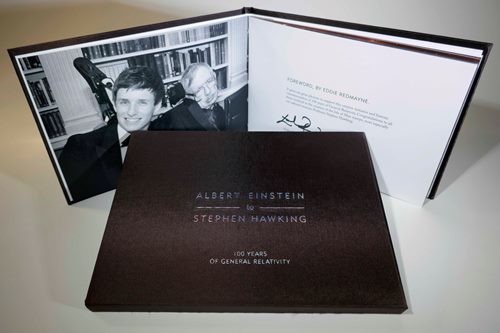
Special edition. (Courtesy: Isle of Man Post Office and Glazier Design)
By Michael Banks
What better way to celebrate Stephen Hawking’s 75th birthday than a limited edition commemorative book?
To mark the occasion, the Isle of Man Post Office has released Albert Einstein to Stephen Hawking: 100 Years of General Relativity – a 32-page glossy tome that features quotes from the two famous physicists.
View all posts by this author | View this author's profile
Hungry reindeer could mitigate climate change, talking about quantum computing and our breakthroughs of the year

Geoengineering: reindeer can change local albedo. (CC BY-SA 3.0/Alexandre Buisse)
By Hamish Johnston
It’s that time of year when everyone is looking for stories with a Christmassy angle. My colleagues here at IOP Publishing are no exception and they have just put out a press release about some reindeer-related physics. Apparently, hungry reindeer in northern Norway are increasing the albedo of their feeding grounds by eating lots of plants. Albedo is a measure of how much sunlight is reflected back from the surface of the Earth – rather than being absorbed and dissipated as heat – and plays an important role in climate. A worry in the far north is that global warming will lead to greater plant cover – which will reduce albedo and lead to even more warming. Now, it looks like reindeer could help break this cycle. “The effect reindeer grazing can have on albedo and energy balances is potentially large enough to be regionally important,” says Mariska te Beest, from Umeå University in Sweden. “It also points towards herbivore management being a possible tool to combat future warming. Most of the arctic tundra is grazed by either domesticated or wild reindeer, so this is an important finding.”
View all posts by this author | View this author's profile
From penguins to photons – the December 2016 issue of Physics World is now out
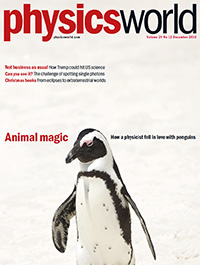 By Matin Durrani
By Matin Durrani
Everyone loves physics. And everyone loves animals, right? In the December issue of Physics World magazine, which is now live in the Physics World app for mobile and desktop, University of Bristol physicist Peter Barham explains how he became an expert in penguins, studying the factors that that affect their survival and discovering how to use the spots on African penguins to identify them. You can also read the article here.
Elsewhere in the new issue, you can enjoy our selection of the best books for Christmas, discover how one physicist became a successful contemporary dancer, and find out how to spot single photons with your naked eye.
Don’t miss either the chance to win a copy of Astronomy Photographer of the Year: Collection 5 in our special prize puzzle.
View all posts by this author | View this author's profile
Top physics books of 2015
By Margaret Harris
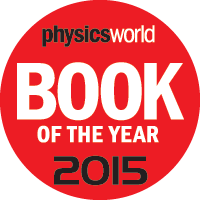 Well written, scientifically interesting to physicists, and novel: these are the criteria used to select Physics World’s annual list of the year’s top physics books. We’ve done this every year since 2009, and over the past few weeks, we’ve been at it again, sifting through the 52 books reviewed in the magazine in 2015 and separating the best from the rest (most of which, I should add, are also very good – we try not to review bad books).
Well written, scientifically interesting to physicists, and novel: these are the criteria used to select Physics World’s annual list of the year’s top physics books. We’ve done this every year since 2009, and over the past few weeks, we’ve been at it again, sifting through the 52 books reviewed in the magazine in 2015 and separating the best from the rest (most of which, I should add, are also very good – we try not to review bad books).
This is never an easy task, and as usual, the selections in our shortlist have been influenced by the views of external experts: the physicists, science writers and science historians who read and reviewed books for Physics World magazine throughout 2015. Their reviews (and, in a few cases, their private opinions) helped us decide which books deserved a closer look, and we thank them all for their contributions.
Deciding on a winner, however, is a privilege we reserve for ourselves, and with so many great books to choose from, it has been both a privilege and a challenge this year. We’ll be announcing our “Book of the Year” in a special edition of the Physics World podcast later this month, but in the meantime, here are the candidates:
View all posts by this author | View this author's profile
The December 2015 issue of Physics World is out now
By Matin Durrani
As the festive season approaches, many of you will be looking forward to popping open a bottle of champagne. But before you treat yourself to a bottle, do check out the December 2015 issue of Physics World magazine, in which fizzy-wine physicist Gérard Liger-Belair from the University of Reims Champagne-Ardenne reveals his top six champagne secrets.
In the article, Liger-Belair explains why a fog appears when you pop open a bottle, the angle at which you should pour the wine into a glass, and how many bubbles there are in a typical glass of fizz. He also wades into that age-old question among sparkling-wine aficionados: flute or coupe?
The new issue also contains a fabulous flow chart, in which you can find out what sort of scientist you are. Don’t miss either our look back at the International Year of Light, a fantastic selection of Christmas books and a feature all about how origami is moving from art to application.
If you’re a member of the Institute of Physics (IOP), you can get immediate access to this article in the award-winning digital edition of the magazine on your desktop via MyIOP.org or on any iOS or Android smartphone or tablet via the Physics World app, available from the App Store and Google Play. If you’re not yet in the IOP, you can join as an IOPiMember for just £15, €20 or $25 a year to get full digital access to Physics World. You can also read Liger-Belair’s article online here.
Carlo Rovelli discusses his ‘Seven Brief Lessons on Physics’
By Matin Durrani
A tiny, 83-page book about some of the basic principles of physics has been a surprise hit in Italy – becoming the single bestselling book of any kind to be published in the country this year.
The book has now been translated into English, entitled Seven Brief Lessons on Physics, and its author – the Italian-born theoretical physicist Carlo Rovelli – dropped by the Physics World offices in Bristol yesterday en route to giving a sold-out lecture about the book as part of the city’s Festival of Ideas.
In the interview above, Rovelli explains what the book’s about, how he managed to condensed big physics ideas into such a short space – and why its success was absolutely not what he expected.
When he’s not writing popular-science books, Rovelli is based at the University of Marseilles in France, where he carries out research into loop quantum gravity, which he once tackled for Physics World.
If you want to find out more about the book, check out Penguin’s rather splendid interactive website.
View all posts by this author | View this author's profile

